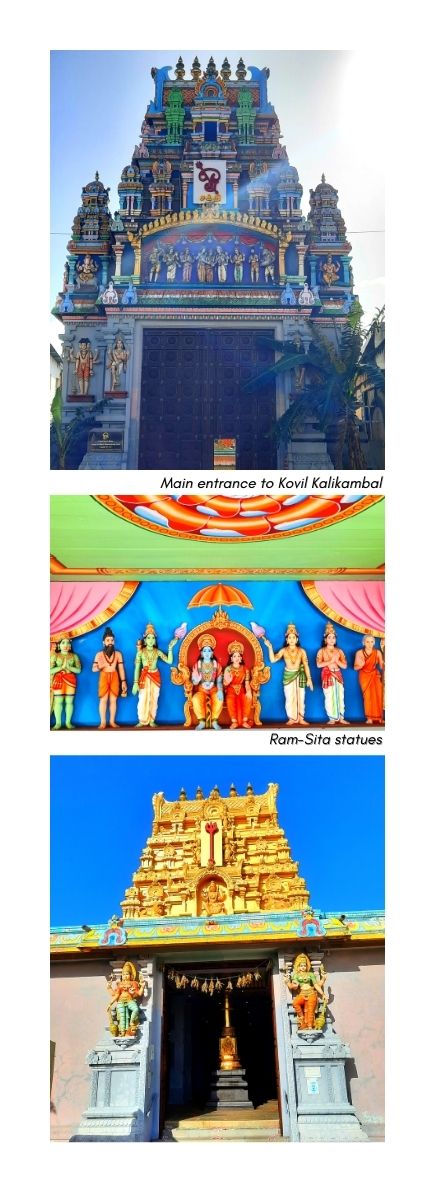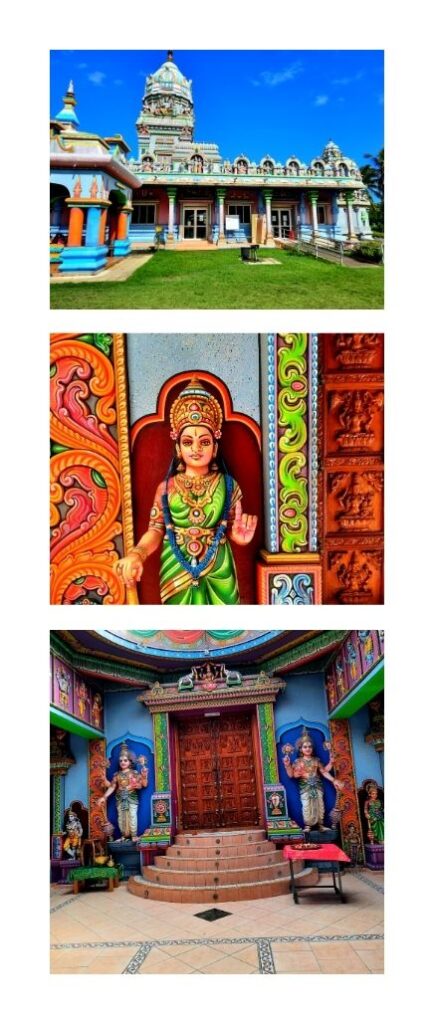
Hindu temples in Reunion Island (Kalikambal Kovil)
Hinduism in Reunion Island has its roots in the 18th century, when the French East India Company brought indentured laborers from India to work in the sugar industry. Many historians and priests argue that it was common for Indian immigrants to be forced to adopt Christian names and have their children baptized in the Catholic Church. However, many people have not renounced their religion; either they practice it in secret or they practice both religions simultaneously. Indeed, it is not uncommon to come across Reunionnaise who practice Christianity and also Hinduism. And the temples and ashrams are important pillars for the transmission of the gospel of Hinduism within the Tamil community, also referred to as “créole malbars”. During our trip, we had the opportunity to visit two magnificent Mariammen temples which gave us an idea of the traditional way of life of the Reunionnaise Tamils.
Kalikambal Kovil
Located at La Rue Maréchal Leclerc de Saint- Denis, the Kovil de Kalikambal attracts many eyes with its vibrant dravidian structure and not to mention the large elegant maroon door that gives it an air of royalty and mystery. What is behind this door? The question we ask ourselves!
The kovil dates back to before 1917, with different presidents taking over its management, and it has thus experienced several consecrations over the years. Originally built by the Indian merchants of the neighborhood, it regularly hosts all kinds of ceremonies.
It is accessed through the Gopouram, the colorful pyramid filled with statues of deities. The main temple is that of the Goddess Kalikambal which the priest describes as a sanctuary and above which is a dome painted in gold. In the sanctuary, the deity is built in graphite. We continue our visit by bowing to the other deities namely Shiva Nataraja, Maha Vishnu, Subrahmanya-Karthikeya (Muruga), Shri Mariamman and the nine planets (Navagraha). Because of the sacredness and various symbolism of each element of the establishment, photos of the Kalikambal and the Shiva Nataraja are not allowed. Nevertheless, the beauty and the extensive explanation by the priest will not fail to impress you.

